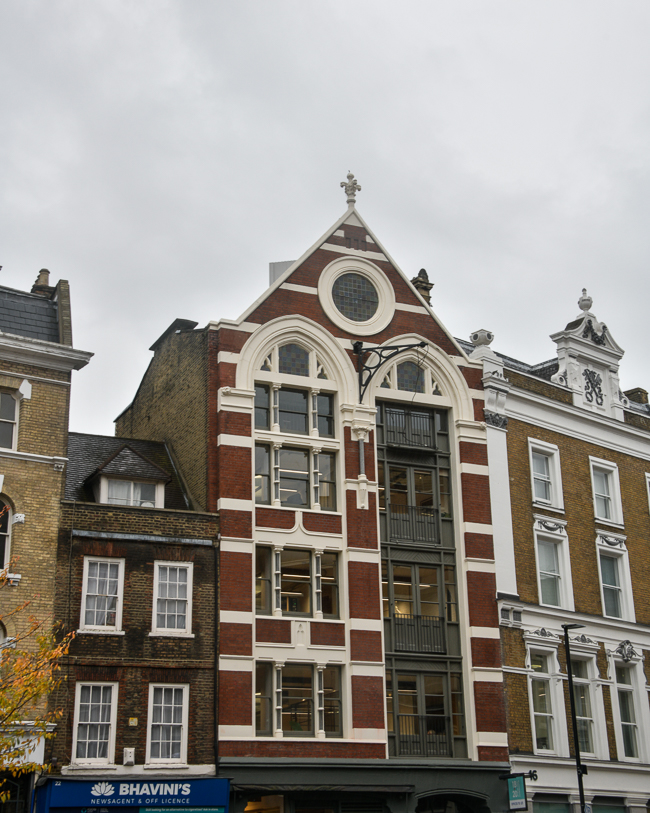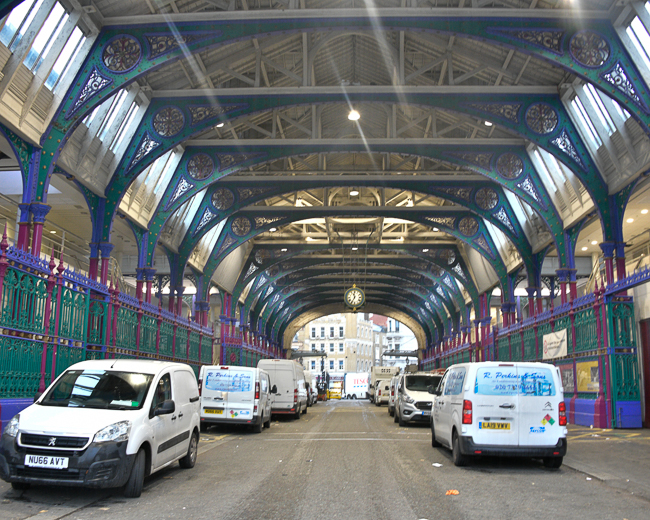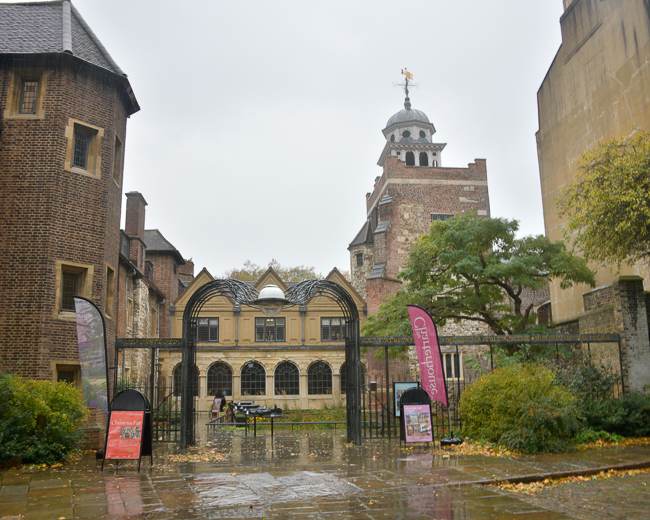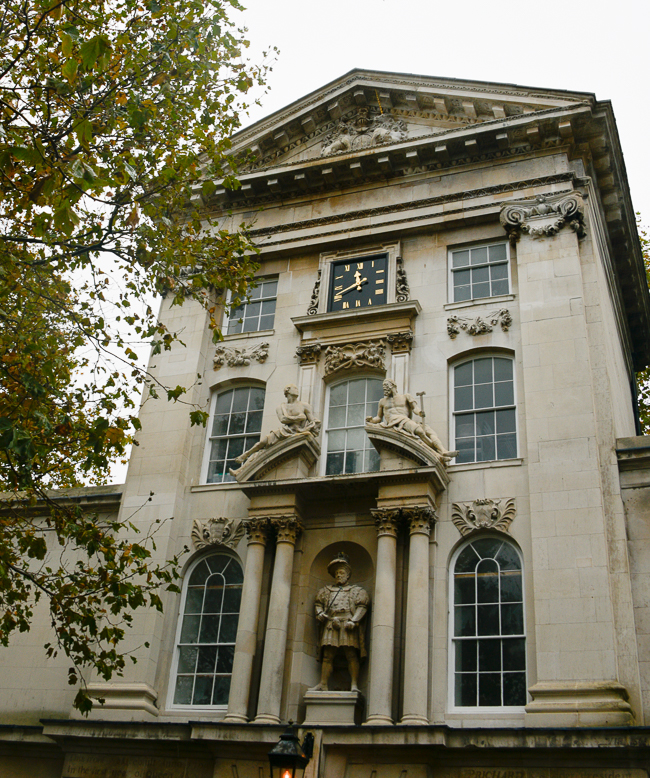November 14, 2023
I began my day at Blackfriars Bridge. Blackfriars originated as a Dominican friary founded in the year 1278. The name Blackfriars comes from the color of the robes that the Dominicans wore.
I had the best of intentions of wandering the Farringdon Neighborhood all day today. The rain began around noon and continued to come down so hard that I made my way back to my hotel to write, dry off, and watch the rain fall on the Thames through the window.
Here is what I did manage to see.
Smithfield
One of the few places in London to escape the fire of 1666, the market’s neighborhood is a treasure chest of remarkable buildings.
The hospital that turned 900 years old this year and a largely Norman church in whose converted chapel a teenage Benjamin Franklin worked as a journeyman printer. In the area, one can find Renaissance-era schools and Turnbull Street, which Shakespeare mentions in Henry IV, Part 2 when Falstaff ridicules Justice Shallow for prating about “the wildness of his youth, and the feats he hath done about Turnbull Street”.
Smithfield witnessed the execution of William “Braveheart” Wallace and, during Mary I’s attempted reversal of the English Reformation, the burning at the stake of many Protestant Londoners. And a mere 200 years ago, men reputedly sold their wives at the Smithfield Market. Wife selling in England probably began in the late 17th century. It was essentially a form of divorce, which was a practical impossibility for all but the very wealthiest.
There is evidence that this neighborhood dates from the Bronze Age. The vast difference in architecture throughout the neighborhood shows that it has gone through many changes over the decades.

Ornamentation on the Smithfield Meat Market
The Smithfield Meat Market was designed by Victorian architect Sir Horace Jones in the second half of the 19th century. The market once dominated this area. That is changing. By 2025, Smithfield’s 1960s Poultry Market nearby will reopen as the home of the Museum of London, while the elaborate Victorian Central Market will subsequently relaunch as a combined food hall/conference center/co-working space in a redesign led by Studio Egret West.
The Charterhouse
The Charterhouse dates to the 14th century when, in 1348, Walter Manny purchased a 13-acre plot of land in Spital Croft from the Brethren of St Bartholomew. Manny established a Carthusian priory, and that is where it takes its name from.
The building has had many historic and interesting tenants and has also been altered and built upon so that not much of the original building remains.
Charterhouse continues to serve as an almshouse to over 40 older people, known as Brothers, who are in need of financial support and companionship. Since 2017, women have been accepted as Brothers. It is open to the public in partnership with the Museum of London.
*
This area is littered with plaque pits. It is thought that the one under Charterhouse Square could be the grave of as many as 50,000 Londoners. The pits were necessary as the plague, which wiped out 60% of London, happened too fast to bury people properly. The pits were discovered during the construction of a Crossrail project.
This stunning art deco building is the Fox and Anchor. It was designed by architect Latham Withall and built in 1898 by W. H. Lascelles & Co.. The architectural ceramics and sculptures are by Royal Doulton and designed by W.J. Neatby in the British Art Nouveau style.
As I quickly walked home before my umbrella could give way and I would be ankle-deep in water, I was able to capture these last two shots.
The Golden Boy of Pye Corner from the 17th century. It marks the spot where the 1666 Great Fire of London was stopped. The statue of a naked boy is made of wood and was originally winged. The Monument to the Great Fire marks where the fire started.
Last year, when I walked by St. Bartholomew’s Hospital, it was covered in scaffolding. This time, I was able to see the only statue of Henry VIII, dressed in his resplendent style, on display in all of London. It was erected in this gatehouse in 1702 to acknowledge that in 1546, Henry granted St Bartholomew’s to the City of London.
I had begun to explore this area last December when I was here, and today, despite my day being cut short, I was glad to get back to it.
This area isn’t as touristy as other parts of London and had its rough times in the 70s and 80s, but the number of new hip restaurants and pubs is a sign it is coming back with a vengeance, and that makes it a fun area to explore.











